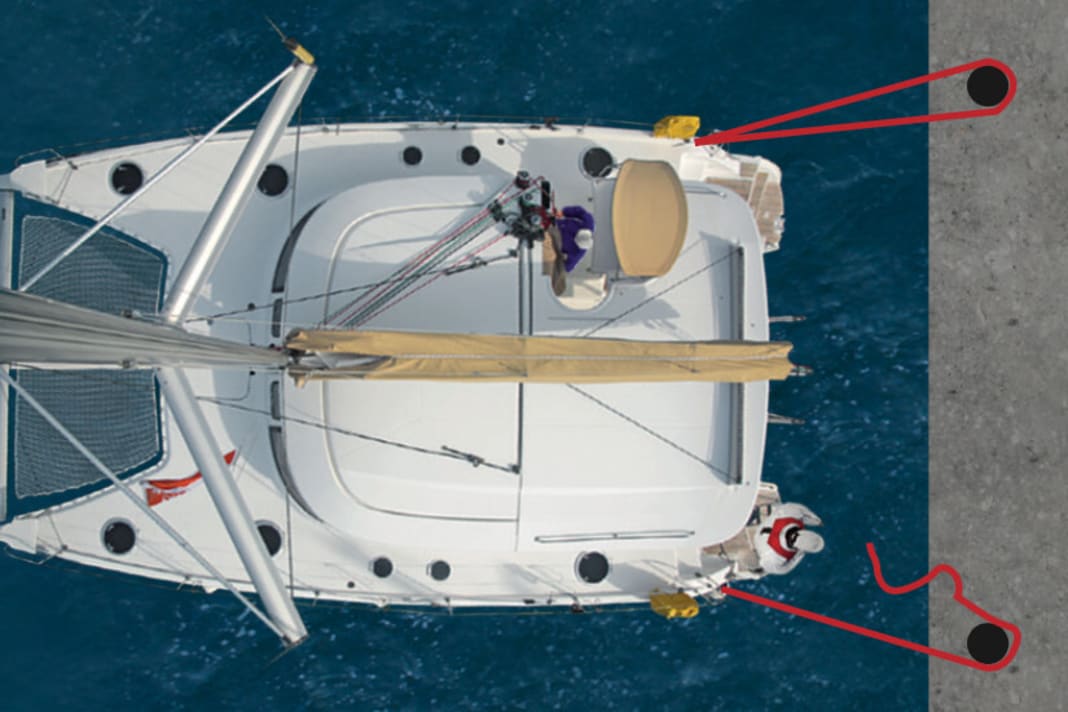Manoeuvring: You need to know these 9 catamaran harbour manoeuvres
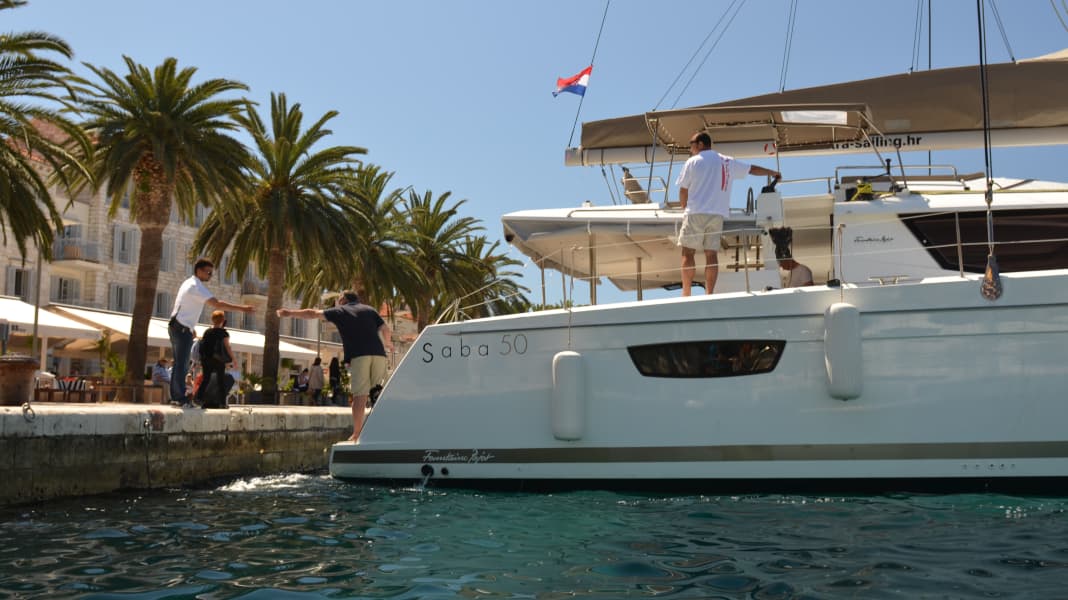
The biggest advantages of catamarans over monohulls can be seen outside the harbour basin: they are ideal bathing platforms without rocking at anchor and offer significantly more space and comfort for the same length. They sail upright; manoeuvres such as tacking or gybing are now possible without any problems. They are just as fast as a monohull and do not require any advanced sailing skills.
However, as soon as a catamaran enters a narrow harbour, you have to rethink. The boxes need to be significantly wider than for monohulls - not all marinas are designed for this. There is also a design feature that can make manoeuvring in the harbour more difficult: Due to their shallow draught, cats have less resistance to drifting and a much higher superstructure, i.e. more windage, than monohulls. They therefore have a greater tendency to drift than monohulls.
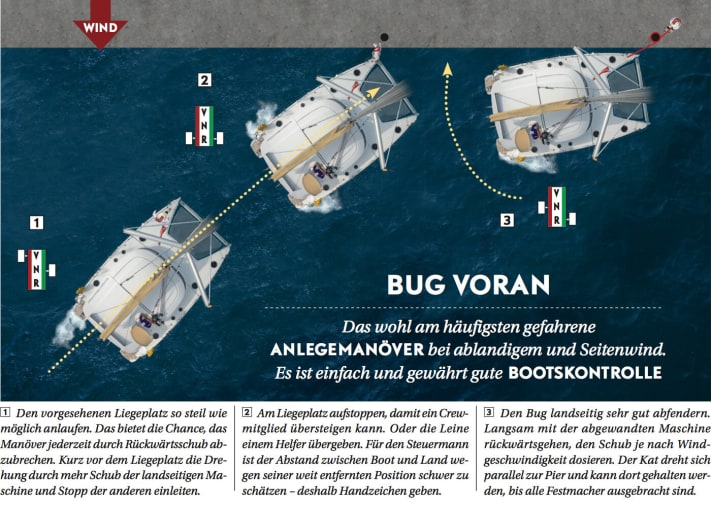
Although all modern cats have two independent engines and are therefore very manoeuvrable, they can even be turned on the plate, unlike a monohull - but the plate drifts, to exaggerate, through the harbour. In addition, the propellers often run in the same direction, which can lead to a striking wheeling effect. In combination with the enormous dimensions of these vessels, it is easy to feel uneasy or overwhelmed. Our instructions for the most common harbour manoeuvres, which are shown on the following pages, can help.
A very important tip that applies to all the manoeuvres shown here is to avoid using the rudder. As soon as things get tight, both blades should be fixed exactly in the centre position, either with a wheel spindle or with rubber stops. The reason: a cat does not need the rudders when travelling slowly. Turning is only possible as a circle via the rudders, but on the spot via the engines.

- Approach the berth steeply with a slow aft exit. On many catamarans, the helmsman can see at least one stern. A crew member can take charge of the stern facing away. After stopping, the helmsman goes ashore with the mooring line and ties it up.
- The cat now hangs securely and can be steered in a very controlled manner. The helmsman steams into the stern line with the engine opposite the mooring line. The more thrust he gives, the more powerful the turning momentum. The stern on the land side can be anchored very well again.
Due to the wind vane effect, catamarans are safer to steer astern than forwards when travelling slowly. This also applies when mooring at a pier.
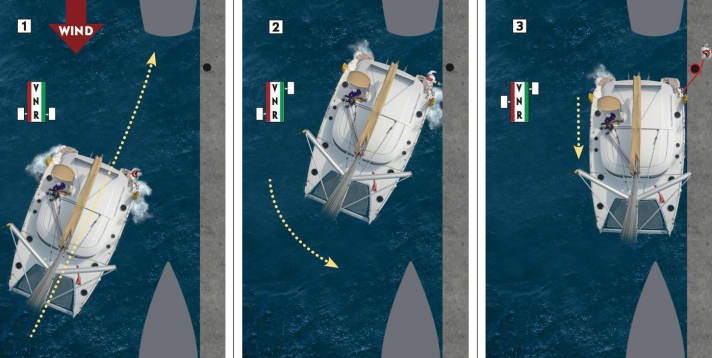
- Slowly bring the catamaran stern-first into the gap at the pier. Anchor the landside hull well, especially at the stern. Look for a bollard or ring that is slightly to windward of the berth.
- Drive with the stern so close to the shore that a crew member can step over. As long as the mooring line is not occupied, keep the catamaran upwind with the shore-side engine in reverse.
- Initiate the turn with the outer engine. As soon as the mooring line is in place, the outer machine is sufficient to keep the cat parallel to the pier. Now take your time to deploy the remaining mooring lines.
The cat lies alongside, the wind pushes it onto the pier. What seems difficult at first is actually quite easy with and even without auxiliary lines. It is important that crew members keep an eye on those corners of the cat that the skipper cannot see clearly from the helm. Three variants at a glance:
Without lines: The enormous manoeuvrability of Kats makes it easier to cast off
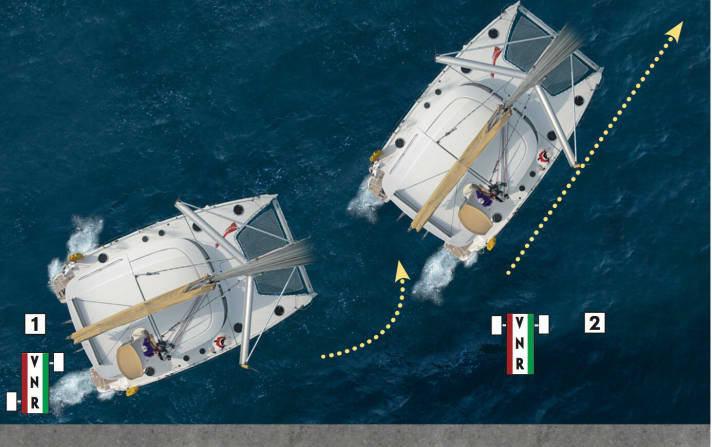
- In light winds that do not shift the cat very much, casting off is very easy. Release all lines and haul in, then slowly let the propellers work in opposite directions.
- Anchor well at the stern. Once the turn has been completed far enough, slowly bring the aft-facing machine first to idle and then to forward speed.
With aft spring: The leverage effect helps in strong onshore winds
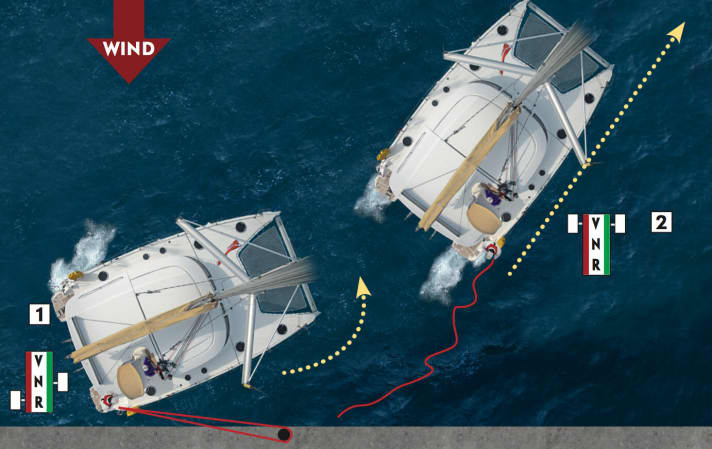
- Anchor the stern particularly well, apply the longest possible aft spring on the slip. Go backwards with the machine facing away and plenty of thrust.
- Once the catamaran has turned round far enough with the bows, move forwards first with the shore-side engine, then with both. Haul in the mooring line quickly.
With bow spring: Turning against the wind is also easy over the bow
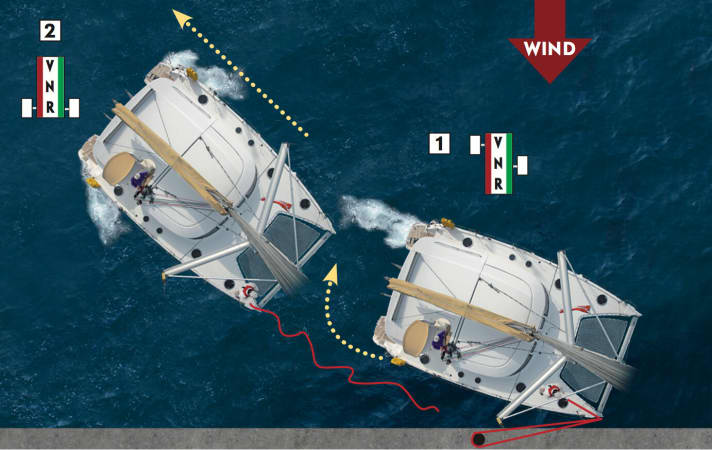
- Anchor the landside bow and deploy a bow spring on the slip. Due to the wedge shape of the bow, this does not need to be very long. Vaporise with the outer machine.
- Wait for the turn, watch out for the fenders at the bow. Slowly switch the shore-side machine backwards, then go backwards with both and haul in the line.
Cast off straight ahead with windward stern line:
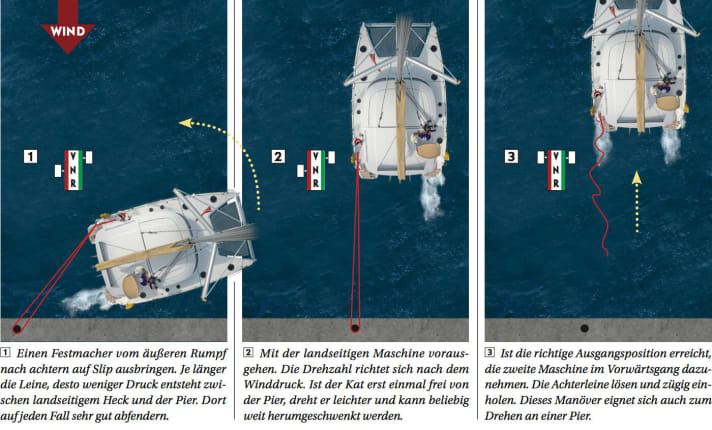
This manoeuvre provides a lot of control in onshore winds. It also eliminates the sometimes critical moment of switching from forward to reverse thrust.
Mooring and casting off with a mooring ring in crosswinds:

It is not that difficult to get a large cat backwards into a narrow gap in a crosswind and pick up the mooring line at the same time. It is important to secure the cat upwind first.
- If possible, approach a mooring with mooring lines with the stern against the wind in crosswinds in order to be able to control the drift. Only initiate the turn directly at the berth by turning the propeller in the opposite direction.
- Deploy and cover the windward mooring line as quickly as possible. Steam against the mooring line with the leeward engine to keep the cat upwind. Now take up the mooring line to windward and tie up.
Getting away from the pier and the mooring ring is also not so easy when there is a strong crosswind on the cat. Due to its high superstructure, it offers significantly more surface area to attack and is therefore driven away more quickly. This is why the correct sequence is important when releasing mooring lines and mooring rings. The series of pictures shows how to do it.
